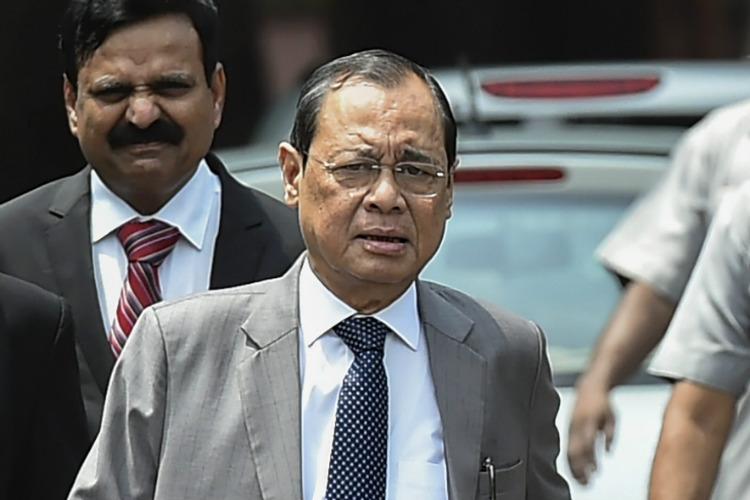One can believe the darkest hour in a democracy to arrive when the judiciary ceases to be independent. After the Chief Justice of India, Ranjan Gogoi had been accused of sexually harassing a former employee of the Supreme Court; proceedings were being conducted to gauge the basis of the allegations. However, media organizations and NGO activists have come together to question the judicial institution and procedure for dealing with such cases.
In light of the allegations, there are certain sections of the society who have immediately jumped to the conclusion of the CJI being guilty of the levied allegations and seem keen to seek his removal. For this, the established procedure being followed by the court is unsatisfactory to them. The saga of accusations began when four media publications, Leaflet, The Wire, Caravan and Scroll had emailed the judge, alleging sexual harassment and demanding answers. Thereafter, though the secretary-general on the Chief Justice’s behalf had sent a reply to the media houses denying all claims, it had been decided to proceed with the matter judicially, keeping in mind the rights of the accuser.
In furtherance to this, a committee consisting of 3 members had been formed; which is according to the in-house procedure established by the Supreme Court of India using Full Court Resolution dated December 15, 1999, wherein a Report of a Committee of Judges on ‘In-House Procedure’ dated 31st October 1997 was unanimously adopted, with a few modifications. The In-house procedure was brought in to devise such procedure for taking suitable remedial action against Judges whose acts have been legally questioned upon. This procedure was established to serve the dual-purpose; firstly, the allegations would be examined by his peers and not by an outside agency and thereby the independence of Judiciary would be maintained, and secondly, the awareness that there exists a machinery for examination of Complaints against a Judge would preserve the faith of people in the independence and impartiality of the Judicial process. These measures have been implemented to safeguard and protect the judicial institution against allegations which turn out to be false and baseless and at the same time ensuring that justice would be ensured.
This is exactly the procedure being followed in this case, regarding the allegations against CJI Ranjan Gogoi. The Inquiry in the In-house Procedure is meant to be in the nature of a fact-finding inquiry wherein the Judge concerned would be entitled to appear and have his say, but it would not be a formal judicial inquiry, involving the examination and cross examination of witnesses and representation by lawyers. Furthermore, on the outcome of the Inquiry, if the Committee finds substance in the allegations contained in the complaint and the misconduct disclosed in such allegations is such that it calls for initiation of proceedings for removal of the Judge then only further action will be taken.
It is important to note here that according to Article 124 of the constitution, a judge can only be removed if his misbehavior and incapacity is proved and only through the procedure followed by the Judges (Inquiry) Act, 1968.
However, the present scenario has thrown up a new challenge where, without following due process, the office of the Chief Justice of India is sought to be tarnished overnight by the media. Certain media houses and activists have been claiming that the judicial proceedings aren’t proper and that she (the accuser) hasn’t been allowed representation. Whereas, the truth of the matter is that the proper procedure is being followed to conduct the in-house proceedings. These aren’t supposed to be formal judicial enquires but a fact-finding mechanism to prove whether or not the allegations have any base. Therefore, the legal procedure involving the representation of advocates is not involved.
There seems to be an abruptness in the media’s conclusions which are sought to label the CJI as a perpetrator. Writing an open letter supporting the accuser,300 persons including NGO activists and advocates have stated, “We … stand in solidarity with the decision of the complainant to withdraw from the in-house committee proceedings …The reasons given by her in the letter justify her decision to abstain, especially in the context of total imbalance of power vis-a-vis her on one side and the members of highest judiciary on the other.”
Seeking to change the procedure, they have stated, “We reiterate that the constitution of the three-judge Committee is inherently flawed.”
This is clearly an attack on the integrity of the institution and the due process established by law. The in-house committee consists of 3 impartial judges, following the exact procedure laid down since the past 20 years. However, the media, without knowing the legality of the procedure being followed is simply playing up an agenda seeking to destabilize the judiciary and tarnish the image of CJI before some crucial hearings.
